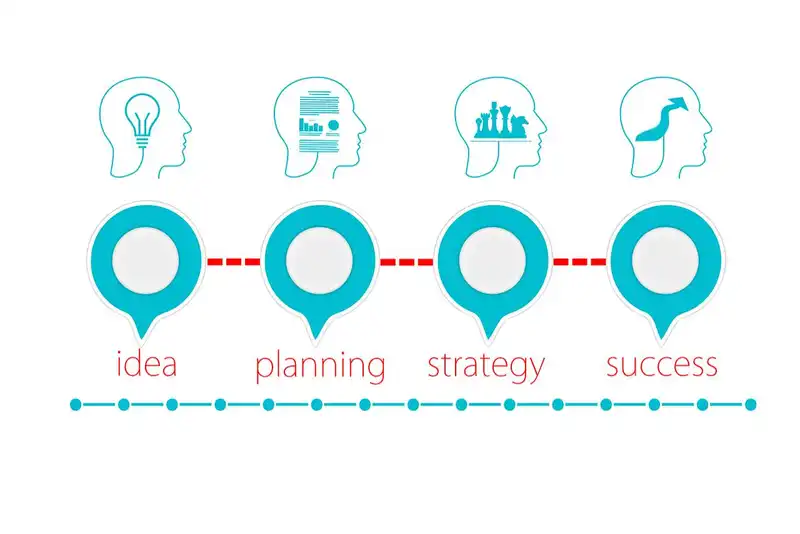The ABCs of Strategic Planning- How it Works and What You Need to Know
Introduction to strategic planning
Strategic planning is a key management tool that outlines the framework of a systemic and flexible process of setting a mission vision and formulating an action plan that facilitates the actualization of those goals and objectives. Strategic planning involves maximizing opportunities, establishing clear strategic directions, and developing strategies to overcome challenges. It has the potential to improve a company's performance, sharpen organizational focus, and establish long-term sustainability. It is important to note that strategic planning alone cannot lead to growth, but it can hugely benefit any organization. Read on to know the processes and benefits of strategic planning!
Things to know about strategic when doing strategic planning

Strategic planning could be looked at as a roadmap for success. A strategic plan offers guidance and works as a reference point to ensure that your business is on track. However, there are certain elements of strategy development that must be considered before formatting a strategic plan. There are-
Mission- The starting point of strategic planning is a mission statement that gives a company a direction and outlines its goals. The mission statement describes the company, where it is at present and where it wants to go. They may be general but are actionable.
Goals- Setting goals is an integral part of strategic plans. Most companies employ the SMART methodology specific, measurable, realistic, and time-bound to select goals. It is important for goals to be measurable as they allow the management to determine how well a business is performing against the set mission.
Short-term Goals- It is important to remember that strategic planning isn't oriented towards achieving long-term goals alone. It also encompasses short-term planning that helps with everyday decision-making.
Review- Strategic planning must remain flexible to external and internal changes. It is important to continuously evaluate you plan and make adjustments for better performance.
Organizations often don’t have a strategic plan, resulting in a lack of direction or focus
The ABCs of Strategic Planning is the ultimate guide for any business looking to create and implement a successful strategic plan
Strategic planning process

Businesses approach strategic planning differently, as strategy plans are tailored to the type and needs of a business. Most strategy planning cycles, however, can be summed up as follows-
Identify- A strategic planning cycle begins with identifying and understanding the current state of the business. This is where the mission statement and long-term goals help in assessing a business and its environment. This can include a needs assessment or a SWOT (strengths, weaknesses, opportunities, and threats) analysis to understand the business's current strategic position and the road ahead.
Prioritize- Now, set objectives and plan initiatives that align with the company's mission and long-term goals. Businesses have several goals that need to be accomplished within given timeframes, and prioritizing them is a good way to ensure that you achieve them.
Develop- This constitutes the heart of strategic planning and involves stakeholders devising tactics to achieve strategic objectives. This could include formulating short-term business plans that supplement the vision statement. Developing a strategic plan may include cost and opportunity trade-offs and rejecting initiatives that don't fit with long-term goals.
Implement- Once the strategic plan has been developed, it's time to implement it. An implementation plan includes setting clear communication across the organization, adjusting processes, making investments, and establishing measurement and reporting routes. Strategy implementation requires regular reviews to ensure that the business is on track.
Review- Strategic plans have to be reviewed over regular periods as businesses may need to adjust short and long-term goals in case of changes in external conditions or new opportunities. Most businesses metrics are quarterly and change strategic plans on an annual basis.
Benefits of strategic planning
Effective strategic planning can be immensely beneficial for companies. By pushing organizations to take stock of their current state of operations, it also allows them to anticipate risks, overcome challenges, and seize opportunities to achieve goals. Strategic planning can give businesses a direction by clearly stating organizational goals and help create a sense of teamwork and accountability. Strategic management can help with other management processes and is a great way to set standards and review adherence.
Strategic planning template checklist
All good strategy plans have key elements that are listed in a strategic planning template. These include setting a mission statement, and ensuring that the set strategies are actionable and measurable. A strategic planning template must have a clean and simple design and must include the strategic planning process. These templates can be made or downloaded from the web and usually come as spreadsheets. They allow users to work through each stage of the strategic planning process, right from the overarching vision, objectives, and values, down to the KPIs.
Strategic planning is a process that most organizations have to do periodically, but it’s not easy
The basics of Strategic Planning will help you make strategic planning easier and more effective
Strategic planning misconceptions

Strategic planning can sometimes seem shrouded in misconceptions. These can range from beliefs that it is quick and easy, or that strategic planning is the same as an annual work plan. Many small businesses feel like creating a strategic plan is the same as a small business checklist. Many companies also hire consultants to generate strategic plans for them. Outside consultants can, at best, help with industry research, but hiring someone to formulate the best strategy for your business has proven to be a waste of money and time. It may even tarnish your business's credibility. It is thus advised to involve stakeholders in creating strategies that can help the business grow and protect it from risk. It is important to note here that stakeholders are not the top leadership. Employees, clients, funders, and partner organizations must also be included in the formulation of a Strategic Plan.
Reviewing and updating your strategic planning
We mentioned above that updating and reviewing your strategic plan is key to ensuring success. But how should a company go about doing this? For starters, discuss your plan regularly to discuss progress, monitor key performance indicators, and ensure that the plan is on track. Strategic Planning also requires companies to look and learn from their accomplishments. This can help you identify what worked and replicate it in the future. It is also important to constantly assess your company's current state and update your goals and priorities accordingly.
Strategic planning is an essential process for any organization, but it can be difficult to know what to do and how to do it
Strategic Planning gives you the knowledge you need to get started with strategic planning and make it a success
